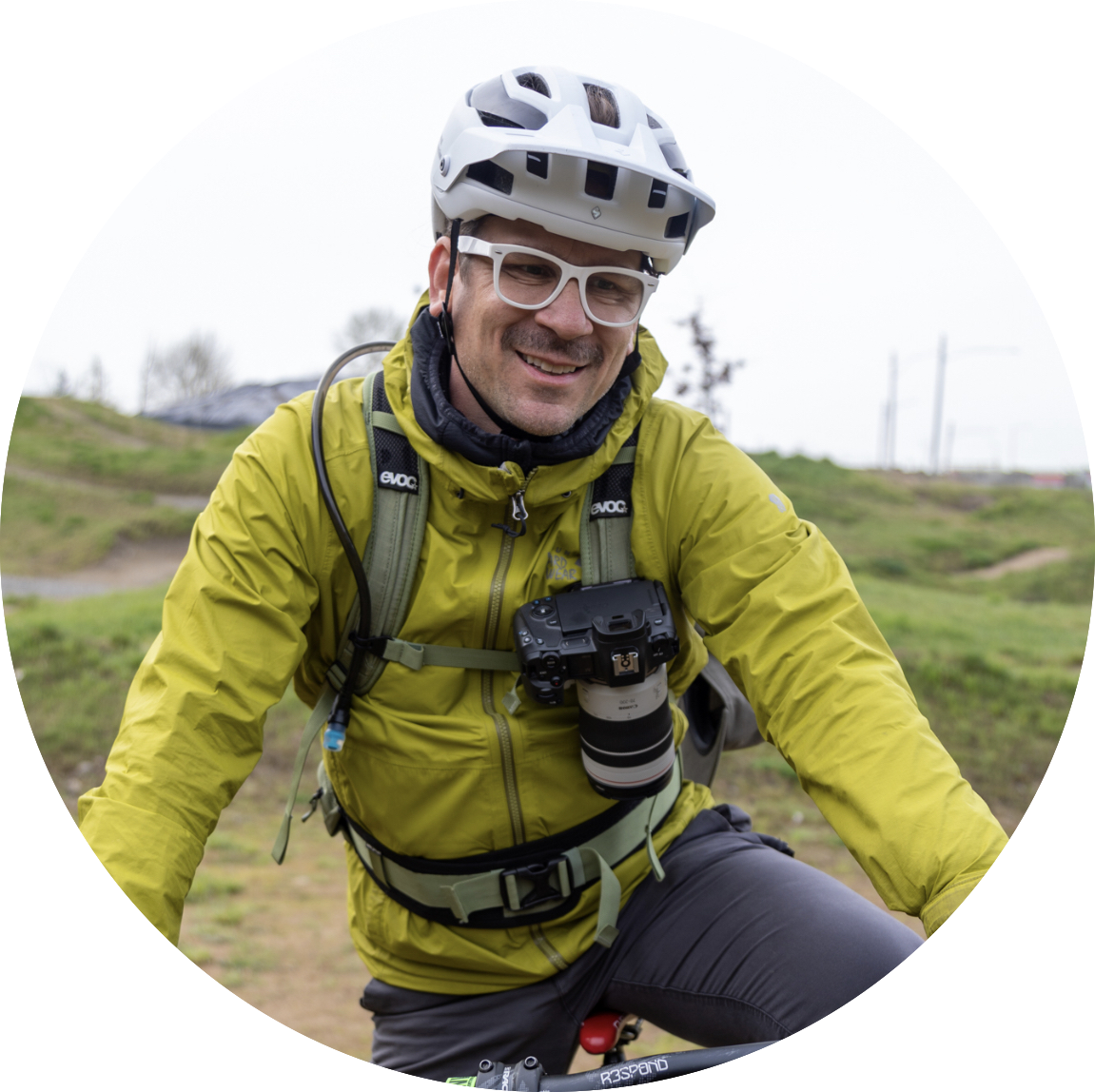If You Build It, They Will Come
I’ve spent the last two Wednesday evenings at the Gateway Green bike park, sandwiched between a maze of freeways in the city of Portland. When one thinks of “bike park,” we often envision lift-assisted access to trails in places like Whistler, Les Gets, and other ski resorts. Gateway Green has no chairlifts, no valet parking, no condos, or anything like that. But what it does have is community.
The bike park has been open for a few years now and continues to go through a transformation. As I mentioned, it’s tucked in between ribbons of the freeway at the I-84 and I-205 interchange and is only accessible by bike. When it was first built, a rough jump line was put into place. It got some use, but not much. Since Gateway Green is close to where I live, it’s not uncommon for me to pedal over, do laps on some of the trails that weave through the trees, and pedal back home. I had always noticed the pump tracks got lots of use, same with the skills areas and the gravity line, but not so much with the jump line. That is, until Tim Copeman, one of the local volunteer trail builders and lead trail stewards at Gateway Green, had an idea.
Revamp the jump line.
Tim wanted to make it bigger and appealing to more users. With input from the local BMX community, the jump line was transformed. Collectively they rolled up their sleeves and worked together to build, shape, and refine. Joe Oshman, the owner of Lolo Racks, was also involved. It’s always exciting when volunteer trail builders put blood, sweat, and tears into a project, but it is on another level when brands themselves get involved.
As a result, something magical started to happen on Wednesday nights once it reopened. Riders began flocking to Gateway Green. I got word of it and brought my camera on the first night. Two days ago, I went back again. I was blown away. I never did any official counts, but the number of riders from Week 1 to Week 2 was already swelling. Like waiting in a queue to hop on a chairlift at a bike park, riders hung out at the top of the line, waiting, taking turns, and doing it all over again. It was a sight to behold. Lots of talking, laughing, cheering each other on. Along with that, I saw a good number of families. Moms and Dads and a crew of little shredders. Community.
Why bring this up? Sure, it was fun catching these moments with a camera and sharing them with the crew. I thoroughly enjoyed watching, chatting, and being amazed. What stood out, though, is about the power of a trail. I know the phrase from the movie Field of Dreams gets overused, but it couldn’t be more applicable than in this case. “If you build it, they will come” (the actual quote from the movie is, “If you build it, he will come”). It’s a cliche, but oh so true. A beautiful new jump line that was created by the community and for the community. Therefore, it should be no surprise that the community showed up to shred.
Trails can have a powerful influence on change. Done well, as we’ve just seen, it can help activate a space and foster deeper relationships. We know when people like this come together, even more positive things happen. And how did it happen? Someone had the vision years ago to create this space now called Gateway Green, an oasis in the middle of the freeway. Years later, another had the vision of a revamped jump line that more people would enjoy.
All over the world, trails are being built. While there are innumerable benefits that we can cite, from health and wellness to economic development, one of the intangible benefits that are hard to collect in qualitative research is simply the power of building a community that comes from building trails. What that means is all of the pre-work is pivotal; advocacy, meeting with local city government leaders, showing up for city meetings, raising funds, applying for grants, and mobilizing volunteers do pay off. This represents all of the “hidden” work before a trail is built. But it’s all part of the process of building trails. The result? Community.
Words: Sean Benesh Photos: Sean Benesh
ABOUT THE AUTHOR
Sean Benesh
Sean is the Founder and Editor-in-Chief of Trail Builder Mag. He is also the Communications Director for the Northwest Trail Alliance in Portland, Oregon. While in grad school, he worked as a mountain biking guide in Southern Arizona. Sean also spends time in the classroom as a digital media instructor at Warner Pacific University, where he also leads and coaches the WPU Cycling Club.

















